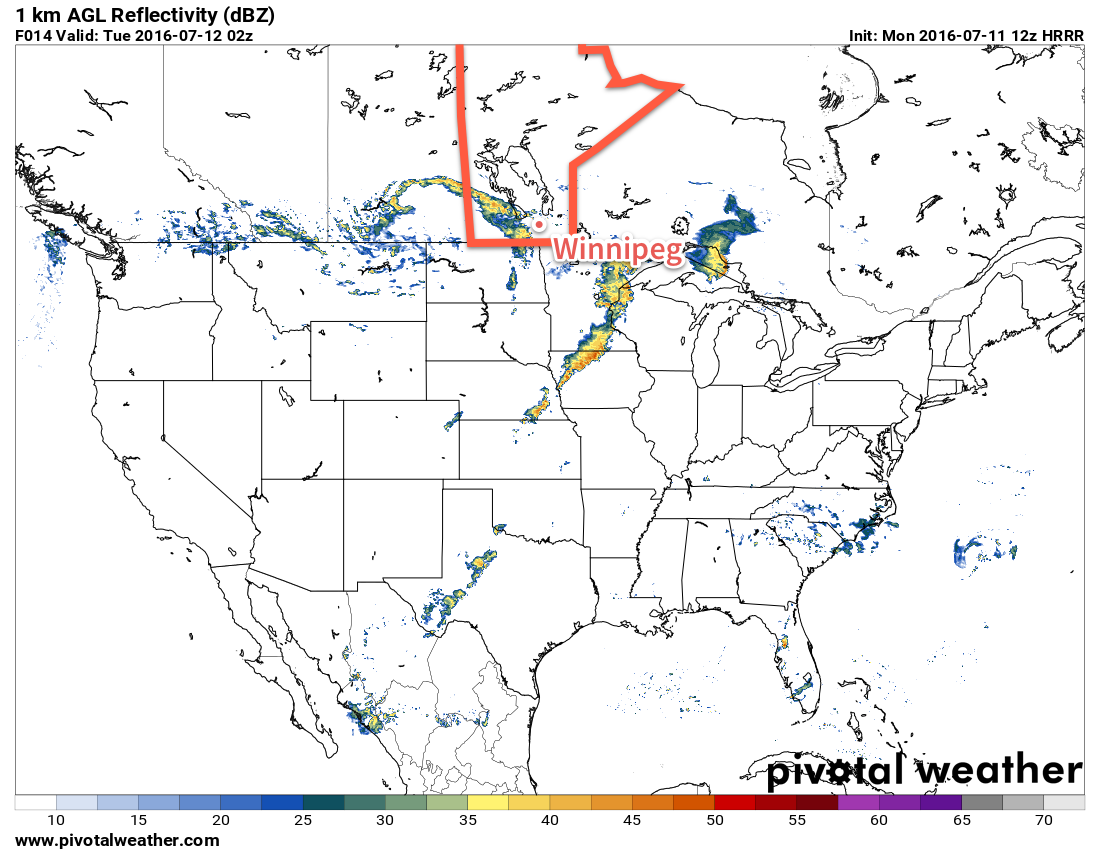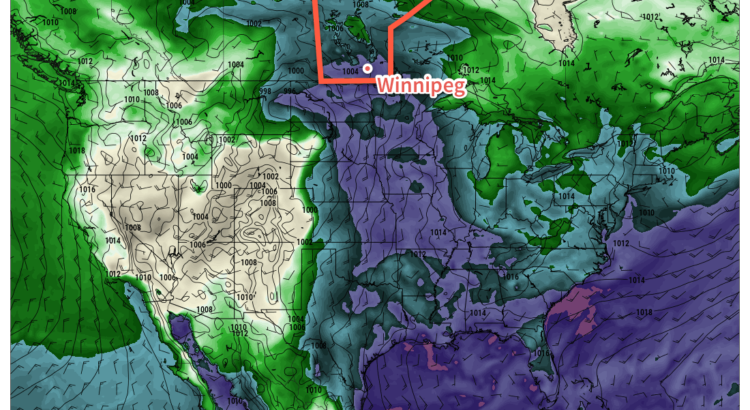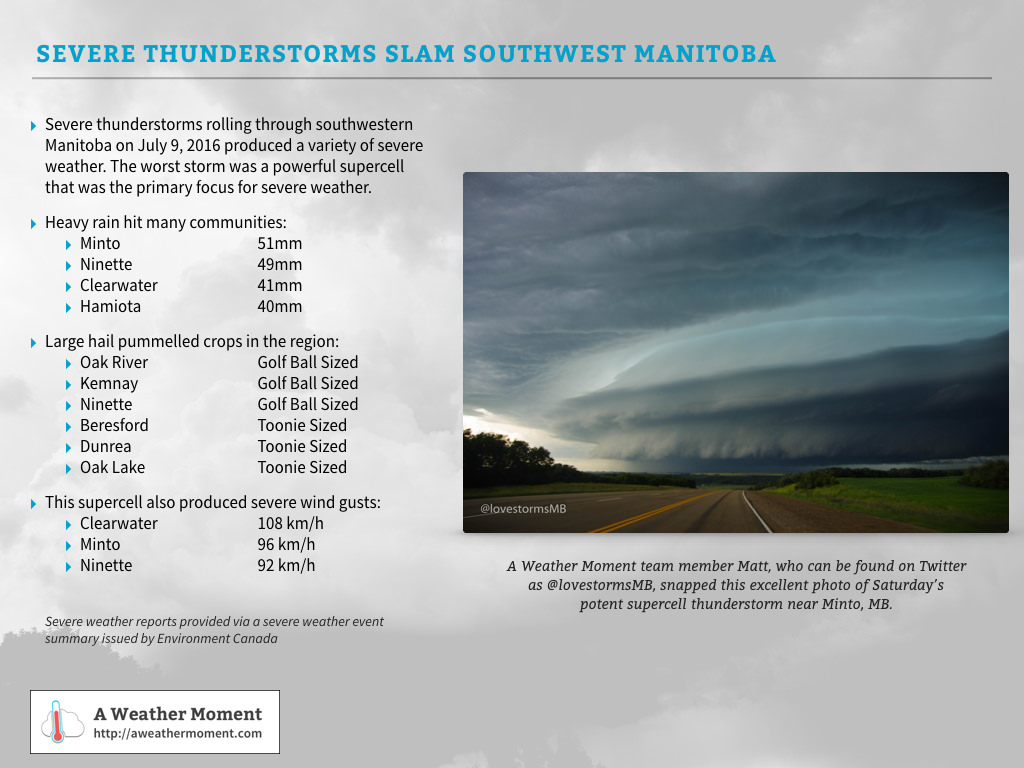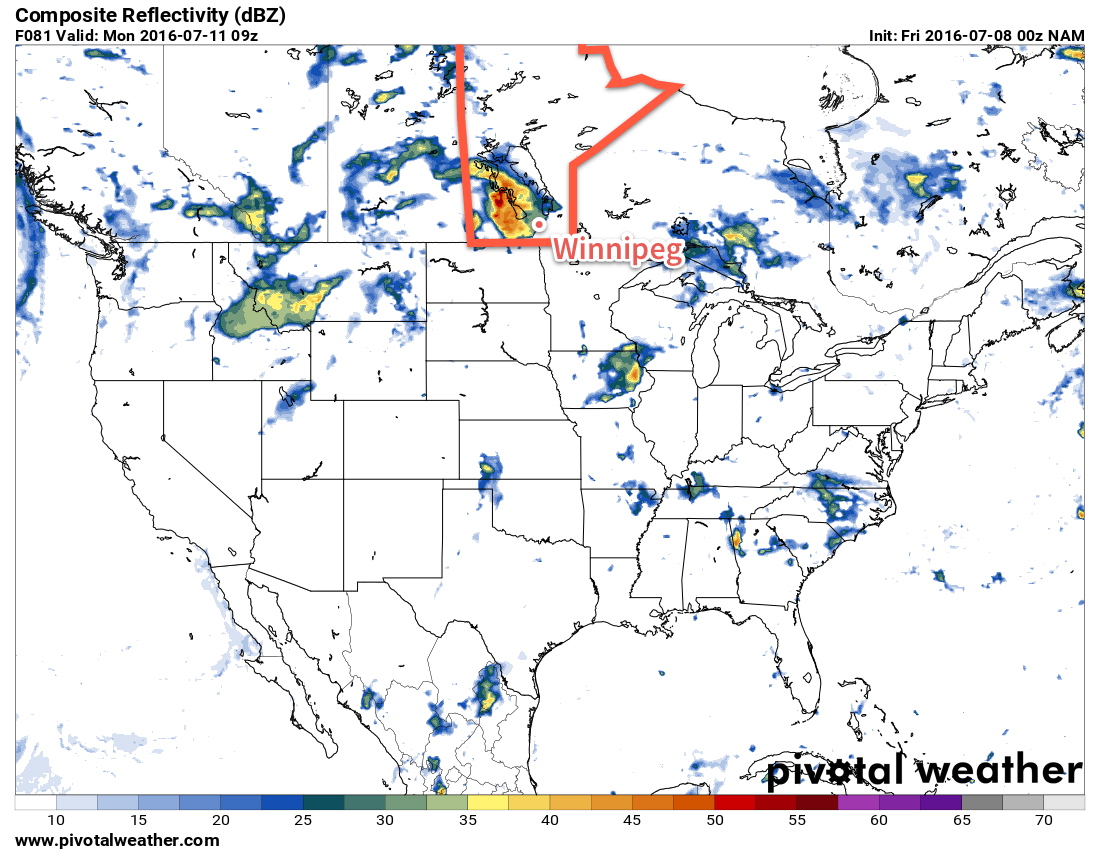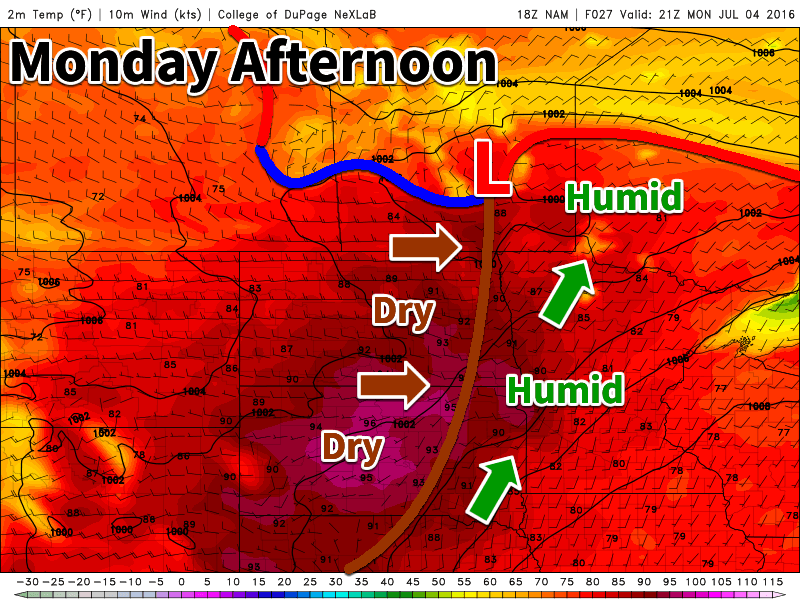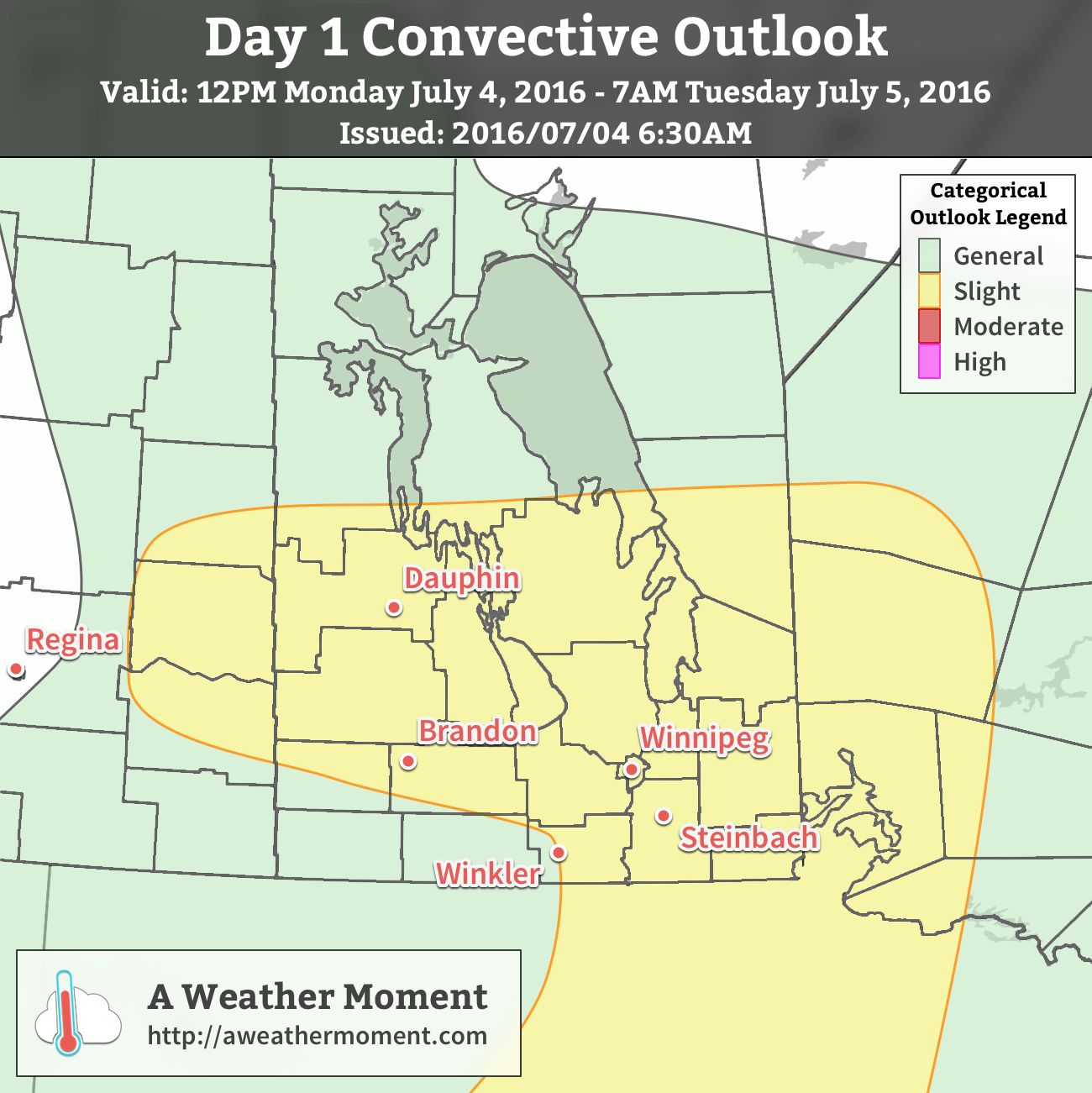Warmer weather is on tap this week as we experience a pattern more characteristic of mid-July. However, this warmer weather will bring with it a risk of severe thunderstorms as higher humidity builds into southern Manitoba.
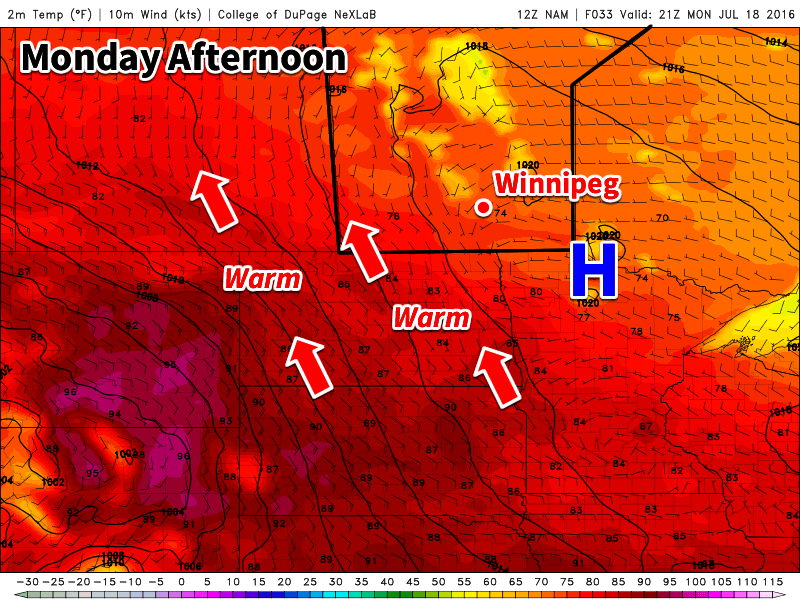
This Week
Today will be a nice day as temperatures rise into the twenties under mainly sunny skies. A surface high to our east will bring a light southeasterly flow to southern Manitoba while building heights aloft help to maintain dry and clear conditions. The only risk of significant weather will come overnight Monday as considerable theta-E advection1 brings a risk of elevated convection developing across portions of western Manitoba. Given the inherent uncertainty in predicting elevated convection, it is possible that a substantial elevated risk could develop, or none at all, depending on the eventual evolution of the system. Current models suggest fairly tame convection will develop in western Manitoba, with more substantial convection further west in Saskatchewan, but this remains uncertain as was previously stated.
Tuesday appears to be the most appreciable threat of severe weather this week as an approaching upper-level trough sets the stage for thunderstorms to develop. But before the thunderstorm threat is discussed, a brief word on the general weather for Tuesday. In most of southern Manitoba it appears temperatures will climb up around 30C by Tuesday afternoon, with high humidity pushing humidex values near 40. A gusty southeasterly surface wind is also expected as a result of the strong system developing to our west. Besides the possible elevated convection on Tuesday morning, as described in the previous paragraph, the main threat for new thunderstorm development is expected beginning Tuesday afternoon in western Manitoba as a surface trough pushes into the region. At this time all modes of severe weather appear to be possible, including large hail, damaging winds, and tornadoes. This summer has featured unusually large volatility in severe weather forecasts, so bear in mind that the forecast provided here is based on the current guidance and is entirely subject to change depending on the eventual evolution of this system.
A technical discussion based on the latest (Sunday afternoon/evening) guidance is provided using the MIST technique:
- Moisture: Considerable moisture is expected to advect into eastern Saskatchewan and western Manitoba by late Tuesday. 100-mb mean mixing ratios near 18 g/kg are expected in the region, with surface dewpoints in the low twenties. ET enhancement will play some role in elevating near-surface dewpoints, but the depth of the moisture will largely result from the advection of deep moisture from the central US Plains.
- Instability: Steep mid-level lapse rates of ~8 C/km are expected atop the boundary layer as a southwesterly mid-level flow advects an EML from the western US. These steep lapse rates in combination with rich boundary layer moisture are expected to result in MLCAPE values of 3000-4000 J/kg in the warm sector. MLCAPE could be even higher on a localized basis given the current model guidance showing mean mixing ratio values higher than those listed in the previous section – although such extreme mixing ratio values seem less probable given the current moisture values in the source region (central US Plains).
- Shear: A 65 kt jet streak at 500 mb is expected to be edging into Saskatchewan by late Tuesday. In addition, a south/southeasterly LLJ of 20-30 kt is expected in the 925-850 mb layer. Surface winds will similarly be from the south/southeast in the warm sector, likely at 10-20 kt. This wind profile is expected to result in effective bulk wind differences (EBWD) of 25-35 kt along the international border increasing to 35-50 kt in east-central Saskatchewan by 00 UTC Wednesday. Considerable low-level veering will result in effective storm relative helicity values of 150-350 m2/s2 across the warm sector, with the highest values in southern Manitoba. Increases in effective helicity can be expected after 00 UTC due to the typical boundary layer decoupling.
- Trigger: A surface trough is expected to extend southward through eastern Saskatchewan by Tuesday afternoon, extending from a strong low pressure system over the northern Prairies. A secondary, weaker low may develop near the MB/SK/ND border, depending on how the upper jet exit orients itself as it rounds the upper ridge. A warm front is expected to be located across Manitoba, although the exact location remains uncertain. It is possible that an outflow-warm front merged boundary may be present depending on the evolution of morning convection. The absence of outflow-reinforcement may result in a fairly diffuse warm front running somewhere through the interlake. Aloft, a strong shortwave is expected to cross the eastern Prairies on Tuesday morning, helping to maintain and/or trigger elevated convection. Later in the day, a weaker shortwave may push through eastern Saskatchewan and/or southern Manitoba, although the timing and placement of this feature are unclear. Weak height falls across southern Manitoba will maintain considerable capping, especially south of the Trans-Canada Highway, where 700-mb temperatures are expected to exceed 10C through the day, and may reach as high as 12-14C.
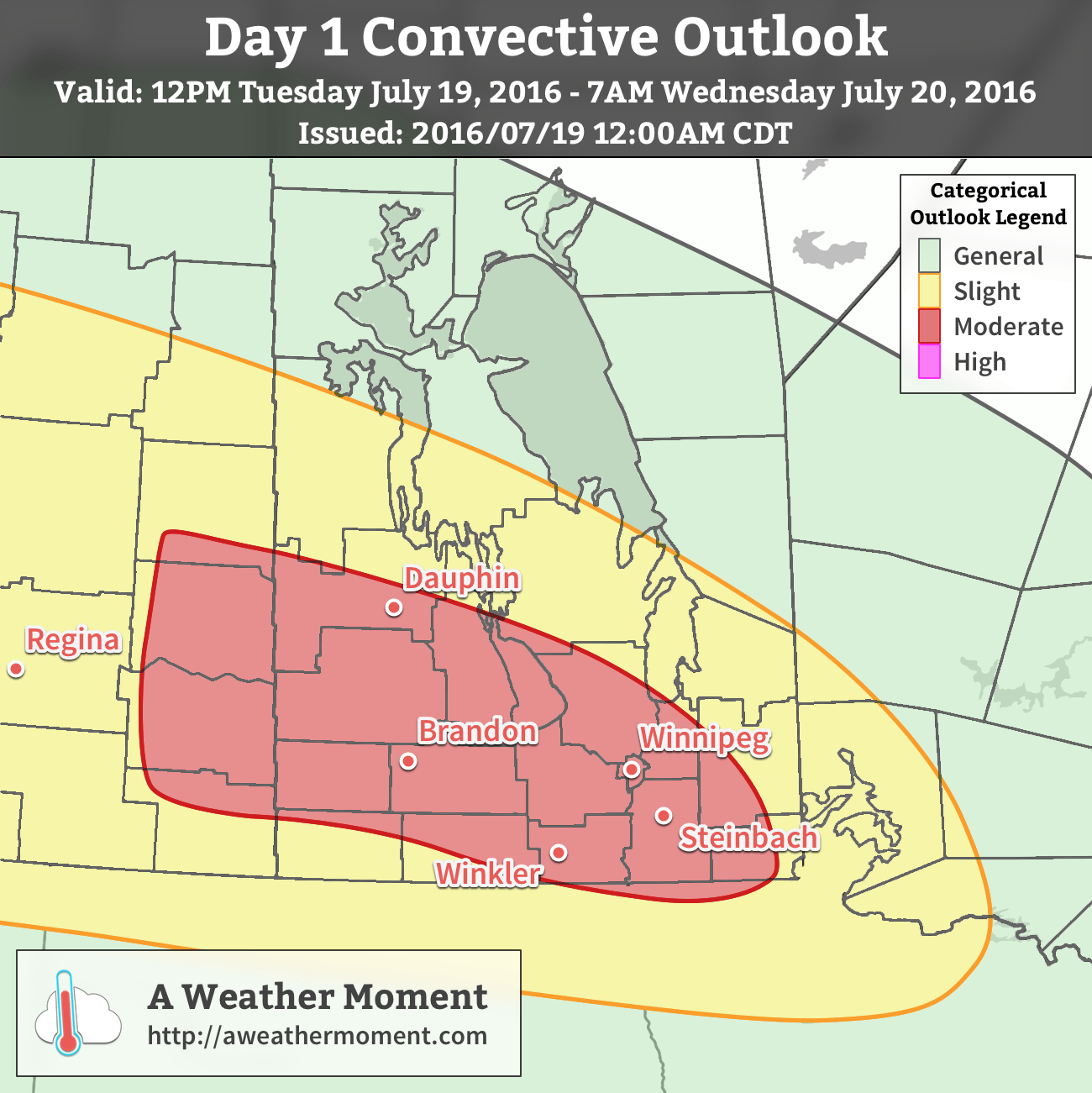
Discussion
A significant severe weather threat exists from central Saskatchewan into southern Manitoba on Tuesday. Strong wind shear in combination with an extremely unstable environment will lead to numerous severe thunderstorms. There remains considerable uncertainty in terms of the timing and location of these storms, thus the following forecast is subject to change. Nevertheless, at the present time wind shear vectors crossing approximately normal to the cold front, along with considerable low-level veering in a moderately capped environment are expected to allow sufficient updraft seperation for numerous discrete cells to initially develop across eastern Saskatchewan by late Tuesday afternoon/early evening. Short bowing segments and supercell structures (HP) are probable, with the likelihood of a severe MCS developing as cold pool mergers occur late evening as cells move across west-central Manitoba. A few tornadoes may be likely in the late afternoon-evening whilst cells remain discrete or semi-discrete. A secondary threat of severe storms may develop in SW Manitoba should the aforementioned secondary surface low develop. However, given the strong capping in the region and uncertainty regarding this feature, convection initiation in this region is more uncertain. Should a MCS develop during the mid- or late-evening period, it would tend to initially propagate eastward, but would likely take on a southerly component as it begins to forward-propagate into the LLJ during the late evening-early overnight period. Such a course may result in the Red River Valley being clipped. Given that such a system would likely be surface-based as it passed through the Red River Valley, owing to slow nocturnal cooling in the early overnight period, damaging winds would be the main threat, with a secondary threat of large hail. Having said all that, an entirely different scenario may unfold should the morning elevated convection remain intense during the day. Some high-resolution guidance suggests the elevated storms will slowly move east during the day, eventually becoming surface-based as they encounter the extremely unstable southerly feed over eastern SK/southwestern MB. Under this second scenario new storms would be less probable, with the main convection focused around the cluster of storms from the morning. Regardless of which scenario plays out, the overall risk is moderate in east-central SK and west-central MB, with a surrounding slight risk region.
Wednesday
The weather for Wednesday will be dependent on how quickly Tuesday’s weather system moves to the east. Some guidance suggests the system may continue to linger on Wednesday, potentially bringing another round of severe weather to southern Manitoba. Conversely, the system may have exited the region by that point. Regardless, temperatures are expected to climb up around 30C with lingering humidity. Should Wednesday end up presenting another severe weather risk we will be sure to provide a new update.
Long Range
The long range forecasts this summer have been quite inaccurate, although that isn’t necessarily unusual. Forecasts have continuous suggested that we will see warmer than normal weather, although that has not often panned out. The current long range forecast continues to suggest we’re going to see generally hot weather through the end of July. This time it appears that this forecast may be a bit more certain than previous ones, although bear in mind that it certainly could end up being wrong again!
Simply put, theta-E is a measure that combines moisture and temperature.↩
